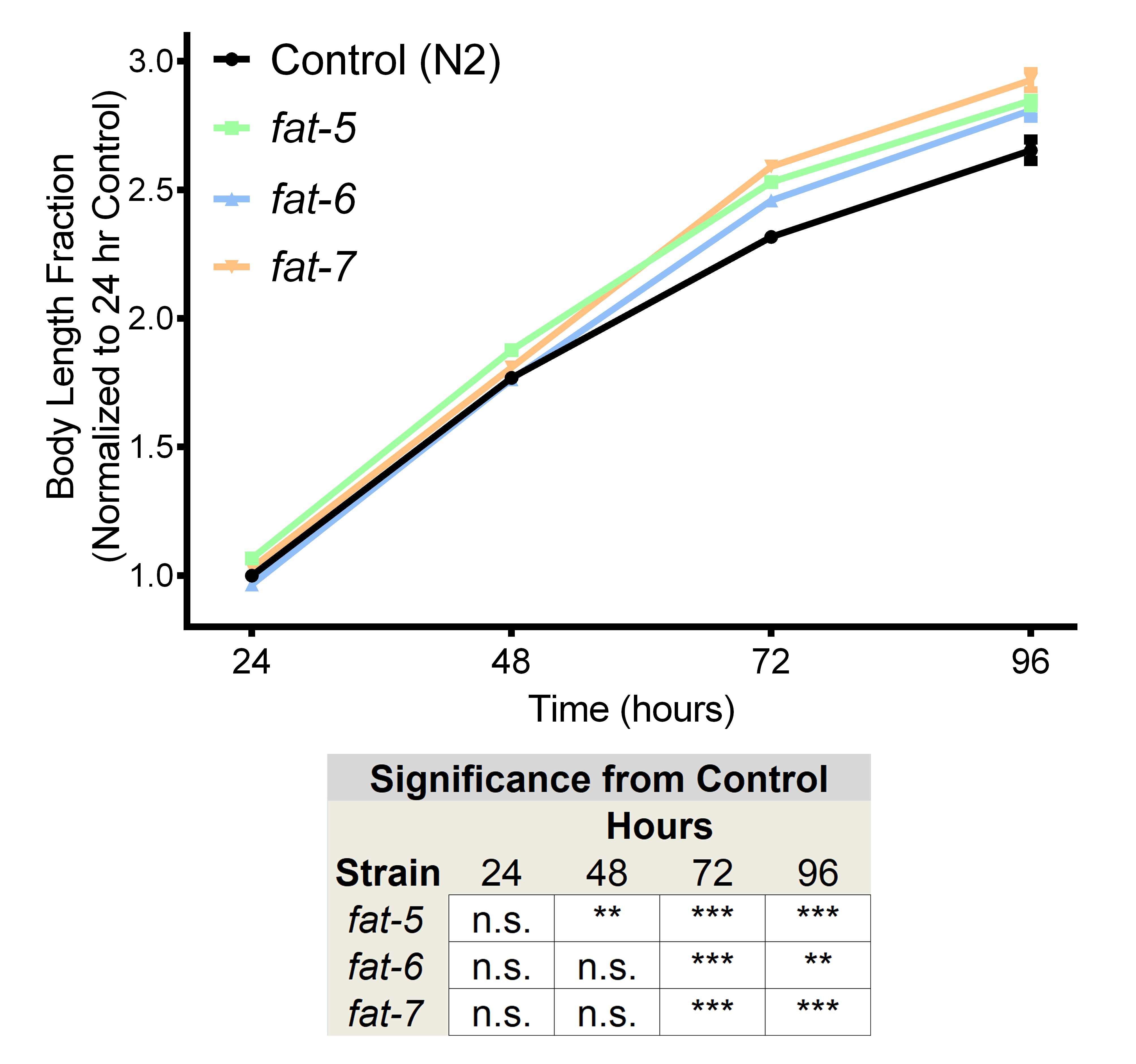Ph.D. Program in Biology, The Graduate Center, CUNY 365 5th Avenue New York, NY 10016
Description
C. elegans contain three Δ9 fatty acid desaturases (FADs), fat-5, fat-6, and fat-7, responsible for the initial desaturation step in the synthesis of complex polyunsaturated fatty acids (PUFAs). Production of PUFAs is vital for survival, as simultaneous loss-of-function in all three genes results in synthetic lethality (Brock et al. 2006). Animals containing mutations in any one of the three Δ9 FADs, fat-5, fat-6, and fat-7, display an increase in body length. fat-5 mutants display a significant increase from 48 hours onward, while fat-6 and fat-7 display a significant increase from 72 hours onward. Since fat-6 and fat-7 mutants have reduced lipid accumulation (Horikawa et al. 2008; Zhang et al. 2013; Clark et al. 2018), these findings on body size suggest that the two phenotypes are not correlated. Consistent with this conclusion, dbl-1 mutants display both decreased body size and lipid accumulation while lon-2 and dbl-1(OE) mutants display increased body size and decreased lipid accumulation at the L4 stage (Clark et al. 2018). Error bars denote SEM, Statistical significance determined via Student’s T-test, n.s. not significant, * p<0.05, ** p<.0.01,*** p<0.001. n>25 per strain, repeated in duplicate. Animals were synchronized via an egg lay followed by a timed hatch. Animals were collected and imaged at 25X using a QImaging Retiga EXi camera with QCapture software at each timepoint. Body length was measured by tracing the midline of the animals in ImageJ.
Reagents
Strains: N2. Alleles: fat-5 (tm420), fat-6 (tm331), fat-7 (wa36).
References
Funding
This work was supported in part by National Institutes of Health R15GM112147 and R15GM097692 to CSD. Some strains were provided by the CGC, which is funded by NIH Office of Research Infrastructure Programs (P40OD010440).
Reviewed By
Jennifer WattsHistory
Received: August 1, 2018Accepted: September 17, 2018
Published: September 18, 2018
Copyright
© 2018 by the authors. This is an open-access article distributed under the terms of the Creative Commons Attribution 4.0 International (CC BY 4.0) License, which permits unrestricted use, distribution, and reproduction in any medium, provided the original author and source are credited.Citation
Clark, JF; Savage-Dunn, C (2018). Delta-9 fatty acid desaturase mutants display increased body size. microPublication Biology. 10.17912/SS8E-6587.Download: RIS BibTeX




